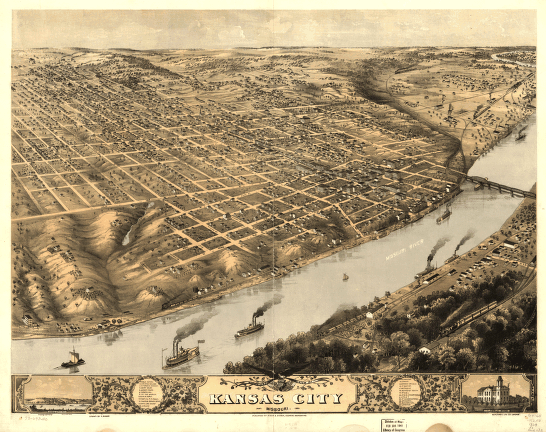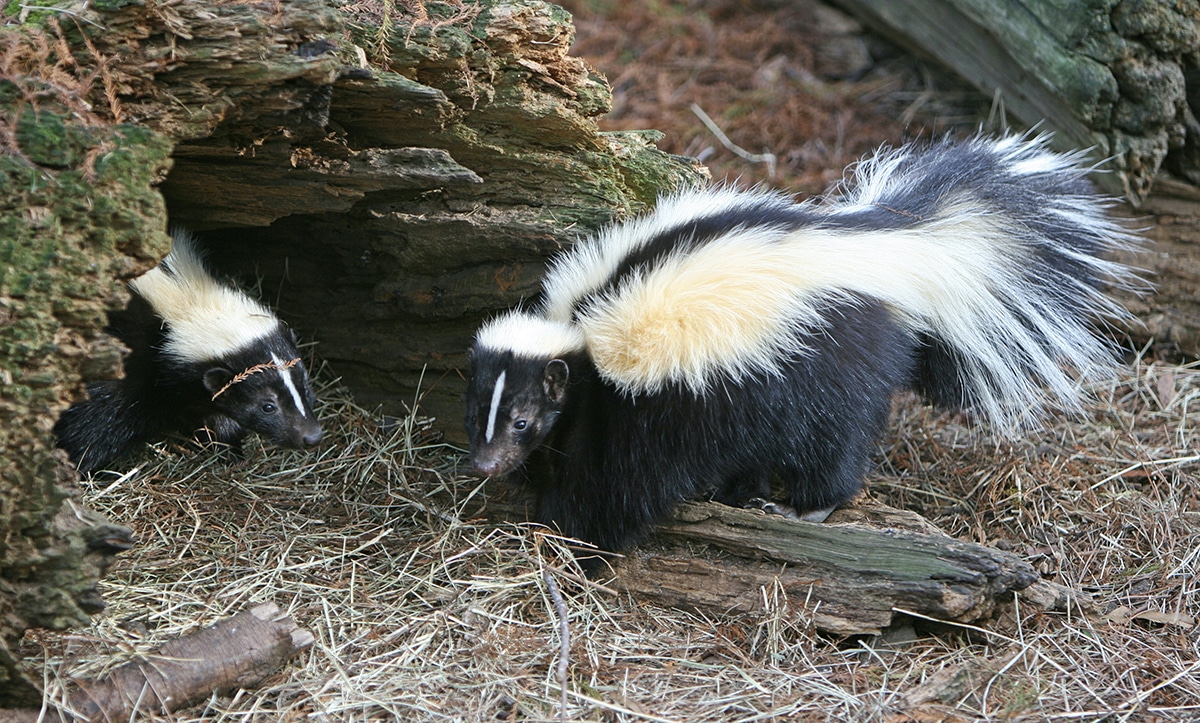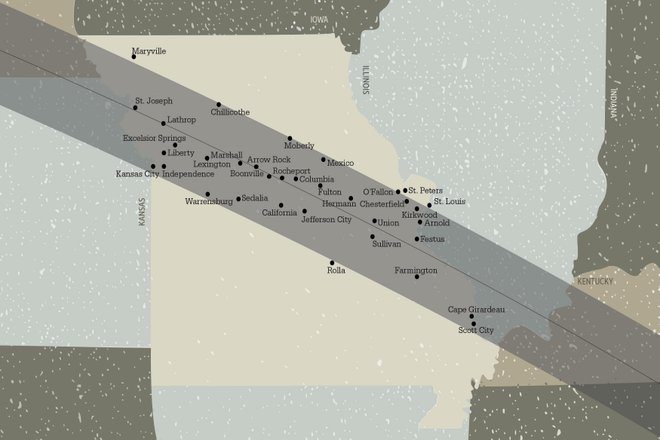Bruce and Jan Sassmann are spending their retirement years perfecting a little piece of ground they call Prairie Star Restoration Farm in Osage County. The dedicated conservationists’ labors have included the construction of replica shelters of Henry David Thoreau’s cabin at Walden Pond, Aldo Leopold’s Sand County shack, and a wall tent to represent John Muir’s wanderings. Bruce and Jan finished and furnished the shelters with attention to the stories of their historical occupants, a trio American philosopher J. Baird Callicott calls the “holy trinity” of the American conservation movement.
Next month, the shelters will come alive when the couple hosts a two-day event—Friday, June 2, and Saturday, June 3—at Prairie Star Restoration Farm with professional reenactors portraying Thoreau, Muir, and Leopold. Each actor will share his character’s story in a living-history presentation of America’s Holy Trinity of Conservation.
The Sassmanns are a special couple. Theirs is a rare marriage of true best friends, each with life skills complementing the other. Jan is an art teacher with three decades of teaching art in public schools. Bruce is a scientist whose biology and chemistry education led him to work in the funeral business.
Bruce’s retirement has led the Sassmanns to a quieter, simpler time and place. They indulge themselves in conservation practices and projects on Prairie Star Restoration Farm, near Bruce’s boyhood home. They’re active members in conservation organizations, including the Conservation Federation of Missouri, Quail Forever, Missouri Prairie Foundation, and the Missouri Conservation Heritage Foundation. The preparation for America’s Holy Trinity of Conservation event is the crowning achievement of their conservation experiments.
On Friday evening, join the reenactors for an intimate social and dinner. Many local and state conservation and environmental professionals and champions will be in attendance. Then on Saturday, experience the stories of these historic leaders from the comfort of their replica abodes. Many other activities throughout the day will entertain and educate visitors in the spirit of the conservationists.
The Missouri model of conservation is the bar against which all other states measure. Rooted in one of the most impressive displays of citizen activism in state history, the restoration of Missouri’s natural resources would likely not have happened without the guidance of these three visionary conservationists, says Bruce.
“The story is not the shelters and it is not about the men; it’s their messages,” he says. “The trilogy of conservation thinking involves Thoreau’s environmentalism, Muir’s preservation, and Leopold’s ecology. It is the foundation of our modern conservation message.”
Richard Smith, whom The Atlantic magazine has called “The Punk Rocker Who ‘Becomes’ Thoreau,” will once again portray the heralded author. Thoreau was born July 12, 1817, in Concord, Massachusetts—where Richard now makes his home—and attended Harvard College, taking courses in rhetoric, classics, philosophy, mathematics, and science. Upon graduating, he refused to pay five dollars for his diploma, an early sign of his commitment to minimalism and simple living.
“I went to the woods because I wished to live deliberately … and see if I could not learn what it had to teach.”
—Henry David Thoreau
Thoreau is best known for the book, Walden, a reflection on simple living in natural surroundings. In order to better focus on his writing, Thoreau spent two years in a small cabin he built on the shore of Walden Pond. During this time devoted to wilderness philosophy, Thoreau developed a harmony with nature that still serves as a guide for the millions who have read Thoreau’s words.
“I went to the woods because I wished to live deliberately, to front only the essential facts of life, and see if I could not learn what it had to teach, and not, when I came to die, discover that I had not lived,” Thoreau wrote.
Lee Stetson, an actor who has portrayed John Muir in Yosemite National Park since 1983, will interpret the naturalist/author who taught us to wander in both spirit and body. Muir was born in Scotland on April 21, 1838. His family immigrated to the United States in 1849. They settled near Portage, Wisconsin, at Fountain Lake Farm. From there, Muir struck out to travel to America.
Muir became an early advocate and political spokesman for the preservation of wilderness in the United States. He founded The Sierra Club, and millions have read his essays. Muir may be best known for his activism to preserve Yosemite Valley. He walked about 1,000 miles from Kentucky to Florida in 1867 and wrote about the journey in his book, A Thousand-Mile Walk to the Gulf. “I think that most of the antipathies which haunt and terrify us are morbid productions of ignorance and weakness,” Muir wrote. “I have better thoughts of those alligators now that I have seen them at home.”
“The trilogy of conservation thinking involves Thoreau’s environmentalism, Muir’s preservation, and Leopold’s ecology.”
—Bruce Sassman
In 1903, President Theodore Roosevelt went with Muir on a visit to Yosemite. Roosevelt asked Muir to show him the “real Yosemite” and the duo went camping in the backcountry.
Conversing with the president of the United States around wilderness campfires, Muir emphasized the issues with state mismanagement and the exploitation of the valley’s resources. He managed to convince Roosevelt that federal control and management would be best. Today, Muir is referred to as the “Father of the National Parks.”
Jim Pfitzer from Rising Fawn, Georgia, will bring to life Aldo Leopold, who inspired the wise use of natural resources. Born in Burlington, Iowa, on January 11, 1887, Leopold was exposed to the outdoors early by his father, Carl. The lessons stuck. Carl’s son grew up to be one of the most influential conservationists of the twentieth century.
Leopold graduated from Yale University School of Forestry. In 1909, he went to work for the US Forest Service District Three in Arizona and New Mexico Territories. He first worked at Apache National Forest in the Arizona Territory, and then at Carson National Forest in New Mexico.
Leopold left New Mexico in 1924 to become an associate director with the US Forest Products Laboratory in Madison, Wisconsin. In 1933, he was appointed professor of game management in the agricultural economics department at the University of Wisconsin, the first such professorship of its kind.
Leopold purchased eighty acres in Sand County, Wisconsin, where the landscape had been grossly mistreated. Heavily logged, overgrazed, and too often burned, it was a desolate land. Leopold’s restoration efforts on his little personal paradise laid the groundwork for his greatest work, A Sand County Almanac. To date, the classic book, which focuses on Leopold’s idea of “land ethic” has sold more than two million copies.
“We shall never achieve harmony with the land, any more than we shall achieve absolute justice or liberty for people,” Leopold wrote. “In these higher aspirations, the important thing is not to achieve but to strive.”
The Holy Trinity of Conservation takes place at Prairie Star Restoration Farm in Bland on Saturday, June 3. Tickets are $20 for adults and $10 for students. There is a special reserved evening dinner on June 2 for $100 per person. To purchase tickets or learn more about this unique Missouri conservation event, visit HolyTrinityOfConservation.com.
Related Posts
January 21, 1879
The Kansas Senate approved a plan to move their border eastward, thus stealing Kansas City from Missouri.
December 22, 1910
The Cassville Republican reported high hopes for a Barry County man who was establishing a skunk farm near Madry, MO.
Everything You Need to Know About the Missouri Total Solar Eclipse 2017
More people in the Show-Me State are expected to experience the totality of the eclipse than any other state along the event’s path.



